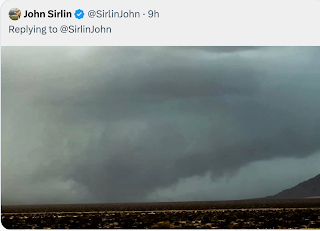The Forecast That Caused Me to Recognize the Potential of Mesoscale Modeling
[This posting is primarily for meteorologists and weather aficionados.]
Five years ago today, the HAZWX model (a company that was later acquired by AccuWeather) made one of the most amazing forecasts I have ever seen. It caused me to change my opinion as to the potential of mesoscale meteorological modeling. While I had seen some good forecasts, they seemed quite inconsistent. I thought the scale of observations available to feed the models was too course create forecasts at a 4 kilometer scale. This forecast caused that opinion to change.
Major tornado outbreaks are rare in November. A high risk in the High Plains in mid-November would have been unprecedented. The 7am NWS Storm Prediction Center's (SPC) forecast (below) showed an enhanced risk of tornadoes near the border of Oklahoma and the Texas Panhandle with a significant risk (brown) farther north and south.
- The above photograph by Jeff Piotrowski depicts a stopped BNSF vehicle train near Pampa, Texas. Lightning made the photo possible. The train was stopped because of our tornado warning. Our clients received early and better forecasts of the tornado threat as a result of the model. If you look closely at the model's forecast, you see that there is a tornado track practically over the City of Pampa and the BNSF track.
- Given the early sunset in mid-November, almost all of the tornadoes occurred in darkness, meaning the earlier forecasts and warnings were important for public awareness.
- Our meteorologists knew that, even though this was a statistically rare event, they needed to get tornado warnings out early. They did. We received praise from our clients for our forecasts and warnings that day.









Comments
Post a Comment